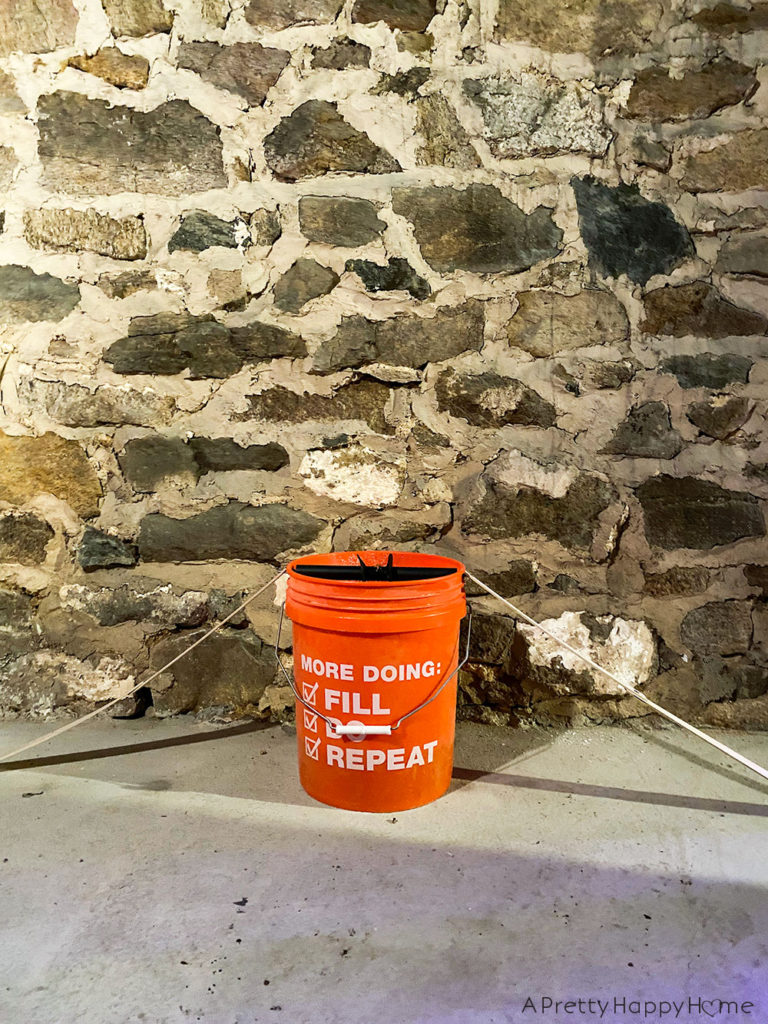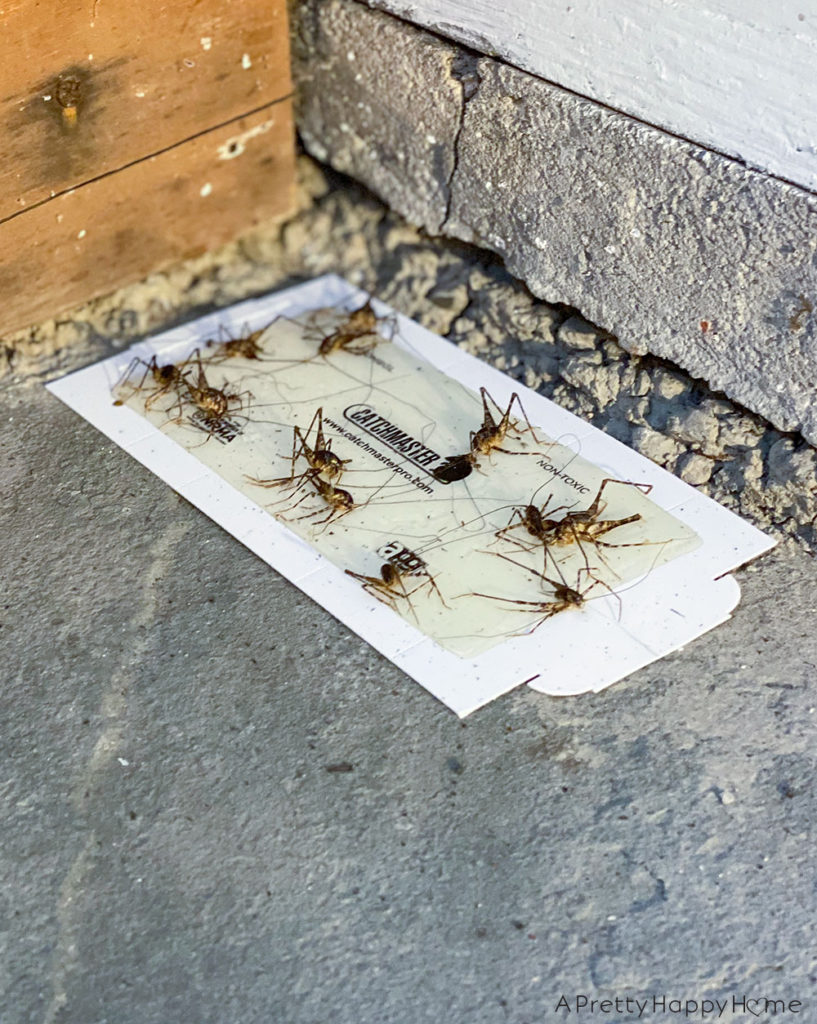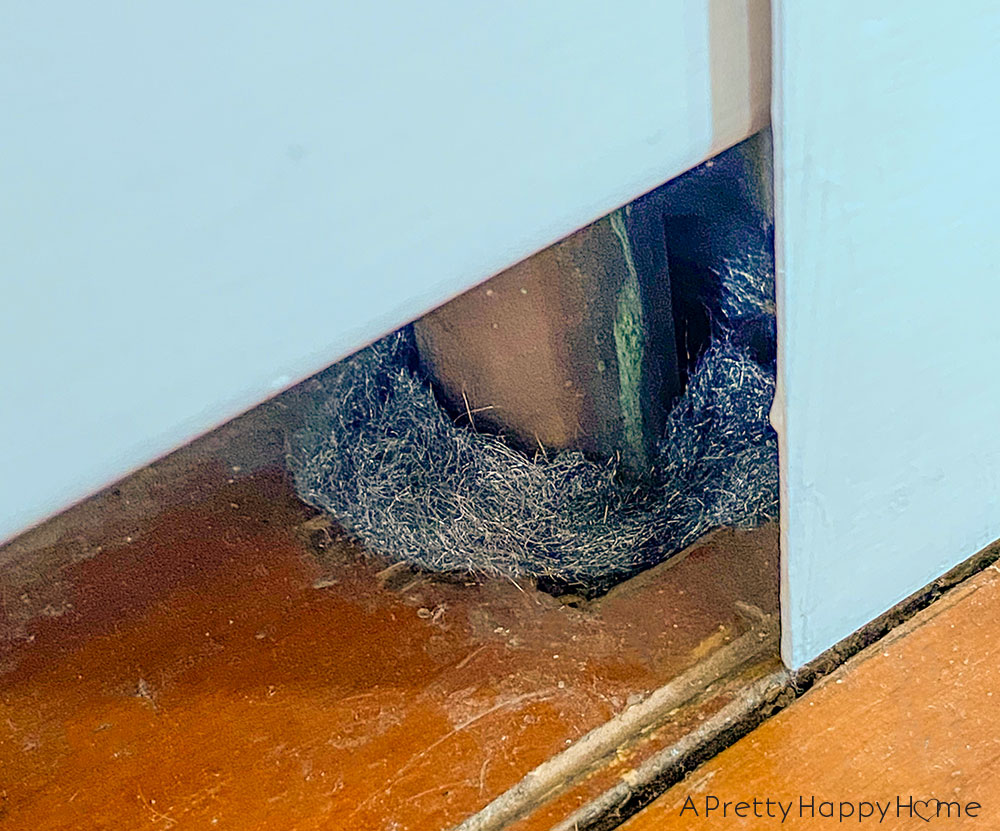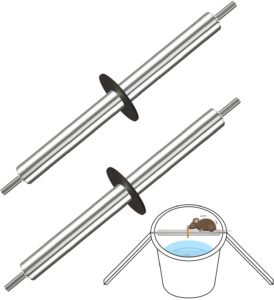
DIY Pest Control Tips For An Old House
Let’s talk about things that make us shudder, cringe, and gag a little – household pests! Specifically, DIY pest control tips to keep those household pests at bay if you live in a creaky old house as we do.
We live in a house that is over 200 years old. It’s built to last. But like many old houses, living in one is a bit like living in a colander.
It’s sturdy, functional, and full of holes.
Unfortunately, those holes are considered by pests to be a wide-open invitation to take up residence inside the house.
Once they are there? They never want to leave.
Why would they? It’s nice and cozy in there with all their friends…and you.
I’m not a pest control expert, so the DIY pest control tips I’m sharing today come from what’s been helping our old house situated in the Northeastern U.S.
I’m also not super concerned about doing things the all-natural way when it comes to pests. I’m more of a “GET OUT OF MY HOUSE RIGHT NOW!” kind of person.
We’re also constantly assessing what’s working, what’s not, and what tactics we can improve in our quest to keep our home relatively free of pests.
If you have DIY pest control tips that have worked for you, I want to hear about them. Let’s help each other! Please message me via email or social media so I can add them to this post.
Fair warning – there will be at least one picture of dead bugs in this post. However, I’m going to balance it out with a cute cat picture to restore a sense of harmony in the universe.
Here are the current things we are doing that have helped improve the pest situation at our house:
DIY Pest Control Tip #1: Close Up The Holes In Your House
This one is so cliché, but it’s the truth. You need to cut off the major access points for pests, especially for mice and bugs.
If you don’t, it’s like hanging out in a leaky boat. You can scoop out all the water you want, but if you don’t plug the hole the water will just keep seeping in.
We figured the stone foundation in our basement was going to be hard to really seal up, but we could seal off the access points from the basement to the rest of the house. Here are some things we did that might help you too.
Close up door gaps:
Cutting off access from the basement to the rest of the house meant making sure there were no gaps where doors met the floors. We used door sweeps or draft stoppers similar to this one or this one. This also makes our house a little more energy efficient. Two for one with this tip!
Close up holes in floors:
Why would you have holes in floors? Welcome to an old house that’s probably had five different heating systems. Ha!
If you have radiators or a boiler then you might have exposed pipes running between the floors in your house. I have seen mice scurry down the holes where those heating pipes lead into the basement and yes, I died a little inside at the sight.
You can pack the holes around the pipes with steel wool. Mice don’t like to chew through steel wool.
You can also install escutcheons (metal rings) that are designed to hide the gap where a pipe meets a hole in a solid surface.
Seal up your windows:
If you have old windows, as we do, take the time to make sure they are properly caulked and that your window screens don’t have tears. Bugs can get in through the smallest cracks and holes.
I took the time to do this in our primary bedroom this summer and it has significantly cut down on the number of Asian ladybeetles we have in that room. If I could just figure out where the rest of those ladybeetles are coming from we’d be set!
DIY Pest Control Tip #2: Catch the Mice That Do Come In
Your house is warm in the winter. It has food. Why wouldn’t a mouse want to come in and drive you crazy in the middle of the night?
In my experience, everyone has their preferred method of catching mice and they are very passionate about that method. We have tried them all.
The one that has worked the best for us and can be used humanely if you are the catch and release sort of person is a 5-gallon bucket with a roller on top. You create a wood ramp up to the bucket and then dab a bit of peanut butter on the roller as bait because mice love peanut butter.

The mice think they can cross the roller to get to the peanut butter, but they can’t. It spins them off into the bucket and then they can’t get out. You can fill the bucket with a few inches of sawdust or water, depending on whether or not you want the mouse to live or die.
When you’ve caught the mouse you don’t have to touch anything gross. You just take the bucket outside and dump the contents into the bushes.
We’ve purchased these roller kits a couple of different times. The ones we purchased most recently look like the ones below. You have to provide your own bucket and sometimes your own ramp depending on which roller kit you purchase.
(image: Amazon)
DIY Pest Control Tip #3: Watch Out For Termites
Termites can be found in the ground almost anywhere except maybe Alaska.
The trick is to keep them away from your home. We use termite stakes around our house and every once in a while, one of them triggers letting us know that something has eaten the bait.
We also keep an eye out for termite activity, such as mud tubes that termites like to attach to your house when they are in the vicinity. So far, we haven’t seen any of those. Crossing our fingers we won’t in the future!
I found this article about how to watch for the various types of termite activity helpful. They do things besides make mud tubes, depending on the type of termite.
These are the termite stakes we are using:
(image: Amazon)
DIY Pest Control Tip #4: Control The Humidity
This is the only house we’ve lived in that has cave crickets in the basement.
If you don’t know what cave crickets are then be thankful that you’ve never encountered one in your shower!
They seem to like dark, damp places, but if we keep a dehumidifier running in the basement during the hot, humid summer it seems to discourage them from congregating down there.
DIY Pest Control Tip #4: Catch Bugs On Sticky Traps
I don’t like catching mice on sticky traps. I’ve found they can eat their way off of them. *gag*
However, sticky traps are really good at catching bugs.
While our basement dehumidifier discourages the cave crickets from taking up residence, some of those fast jumping critters do not get the message.
My second line of defense against bugs coming up from the basement is to place sticky traps down near the doors. It’s shocking how many I catch!

I’ll also put the sticky traps behind the refrigerator or anywhere I see more bugs than usual. Our first year here, before we sealed up the windows, I put sticky traps on the window ledges to catch Asian lady beetles.
DIY Pest Control Tip #5: Replace Rotting Siding and Keep Untreated Wood Away From The House
There are a whole host of reasons why you want to replace rotting siding, but another one to add to the list is pest control.
Rotting siding gives bugs and bees an entryway into your home, or at least your walls.
You don’t want to be the person who ends up on the news because they opened up their wall and found thousands of bees! Can you imagine?
Also, make sure you don’t have unfinished or untreated wood on or near your house. It can be an open invitation for carpenter bees to bore holes into it. We once built a wood outdoor table and took our sweet time finishing up staining and sealing it.
Then we noticed little piles of sawdust on the ground under the table. Carpenter bees were making holes in the wood!
DIY Pest Control Tip #6: Treat Your Lawn
Ticks are especially prevalent where we live in the Northeastern United States. If you’ve ever been bitten by a tick, you know how bad it can be!
We treat our lawn with this Ortho Home Defense Granules, which is supposed to kill ants, ticks, fleas, spiders, and centipedes.
DIY Pest Control Tip #7: General Cleaning Goes A Long Way
General cleaning and regular home maintenance, inside and out, go a long way toward keeping pests away.
All that time you spend sweeping or vacuuming up spider webs, cleaning off your front porch, checking for holes in screens, making sure there’s no standing water pooling in containers around your home, and trimming shrubs away from the house is not in vain!
First, your house looks better. Second, that’s when you often notice the start of insect activity and can stop it before it gets out of hand.
DIY Pest Control Tip #8: Get A Cat
When all else fails when it comes to controlling rodents, get a cat!
Just the smell of a cat can deter mice, which may be a good thing if you have a lazy cat. Lazy or not, they sure are cute.

There are some DIY pest control tips we use or have used that are hit and miss for us. Sometimes they help, sometimes they don’t!
We hang yellow jacket traps outside every summer. Sometimes they catch a lot of yellow jackets and sometimes the yellow jackets seem to say, “Nope! We’re smarter than you!” and avoid the traps.
Every so often we’ll find ants in the house, usually the kitchen. We use these Terro Liquid Ant Bait Stations that are super highly rated. It just takes a while for them to work, so I’m never sure if they are working.
I’ve also used the Ortho Home Defense Insect Killer that you can spray around the perimeter of your home. I think you have to use this on a regular schedule to be effective and I’m terrible about keeping up with that schedule. If I would hire a pest control company instead of trying to DIY my pest control, I wouldn’t have this problem.
So why don’t we hire a pest control company? Where we live, hiring a pest control company is expensive. At least, that has been my experience.
Hiring one may totally be worth it though, especially if they take care of all the pests that plague your house. Some household pests really are a threat to your health and the structural integrity of your house, so it’s not something to take lightly.
Since we haven’t felt like there is room in our budget right now to pay for a pest control company, we’ve been figuring out DIY pest control tips that work for our situation without breaking the bank.
That’s not to say we haven’t used pest control companies with success in the past. When we lived in the southern part of the U.S., we did pay for pest control and found the treatment the company used for mosquitoes to be highly effective. They also helped us with a cockroach problem. *gag*
Do you have any DIY pest control tips that you swear by? We’d be so happy if you shared them so we can learn from your experience and share the tips with others. You can email us your tips or message us on Instagram or Facebook.
In the meantime, I’ll be over here plugging up the holes in this colander old house and dreaming about a time when all the creatures and critters go somewhere other than my house.
Thanks for being here today! Here are some other posts you might enjoy.
DIY Plant Hanging Rod Secured to the Ceiling
How to Fix a Sagging Wood Bench
*affiliate links in this blog post*










